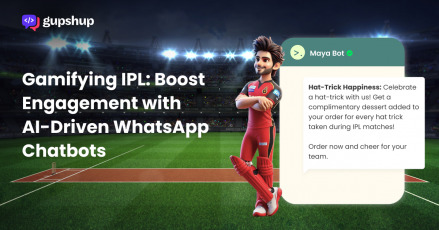How chatbots are becoming the new ‘app’

Why we should forget apps and embrace the oncoming bot revolution…
Similar to the desktop app in the mid-80s, browsers and websites in the mid-90s, and mobile OS and apps in the mid-00s, messaging platforms and chat bots are promising to emerge as the next wave of new IT. The tech community widely sees the development as a once-in-a-decade paradigm shift with potential to create unlimited new possibilities.
In the workplace, we are seeing increasing interest from businesses looking into messaging as a way to automate workflows and processes across their entire organizations. Activities that require employees to use complex backend systems such as ERP, CRM, HRMS, inventory tracking, or reporting, will soon be performed via simple messaging systems. While the backend systems won’t go away, the front end will become a messaging platform. Slack and Teamchat are two examples of messaging apps with the vision of becoming the common unified frontend for every enterprise process.
Let’s take one example: the approval workflow. Imagine a system where an employee submits an expense request through a messaging app. The request is automatically sent as separate messages to Manager 1, then to Manager 2, then Finance. If someone in the chain doesn’t respond promptly, the message is automatically sent to an alternative manager. Automated workflows ensure things get done on time. It frees up users to do their work rather than just manage processes.
There are two critical prerequisites for this to happen: smart messages and messaging bots. Unlike plain-text messages, smart messages contain structured data and code within the message. This enables advanced, rich interactions without clutter. Messaging bots are chat users too – except that they run on software code. Bots contain the process logic that enforces business workflows.
Clearly, there are risks. Any chatbot that can send messages to users can also start sending too many messages.
Bot-powered e-commerce
Outside of the office, bots will also enable a transformation in retail – a jump from catalog-based to conversational commerce. Commerce is about much more than picking an item from a catalog and clicking “buy”. More often than not, consumers seek their friends’ opinions before making a purchasing decision, especially if it’s a joint-use product like furniture, or a fashion-related item like apparel or jewelry. Sometimes buyers want to consult an expert about a complex product like electronics. In other cases, they wish to consult prior buyers who’ve used said product, such as when purchasing long-term durable goods.
Even after deciding to buy, the purchaser may want to negotiate price or terms with the seller, especially if it’s a second-hand product or involves multiple shipping options. Once the item is bought, the consumer may need to contact Support to discuss logistics. Later still, the consumer may need to contact the company again in case of problems with the product.
In each of these cases, a chat-based interface is the ideal solution. However, human agents cannot scale. To provide chat service in any scalable way, e-commerce providers will need to develop messaging bots. These bots will handle user conversations across all activities related to e-commerce. Users will get instant, real-time responses to their queries, driving even more transactions than before.
Tackling malicious bots
Clearly, there are risks. Any chatbot that can send messages to users can also start sending too many messages. Ill-behaved bots may become overly communicative. Malicious actors may abuse the messaging system further to spam deliberately, as is often the case with email. Even if every bot behaves itself, the number of bots may increase dramatically creating information overload for users.
However, there are many ways to counter and mitigate this problem. Just as bots can spam, other bots can counter spam. Each user might have a personal assistant bot that filters messages from other bots, forwarding only truly important messages. Users can delegate authority to their personal agent bots to handle many messages without manual intervention. Most current messaging platforms (such as Facebook Messenger and Whatsapp) are controlled environments, which means the platform operators will impose significant barriers and penalties for malicious actors.
What Silicon Valley thinks
The tech community and developers are generally excited about the rise of chat bots. They see chat bots as the new app. Since chat bots reside on the server side, chat bots are easier and cheaper to develop and deploy than apps. New features can be rolled out faster and easier with chat bots than apps. Chatbots also overcome the download barrier faced by most app developers, since they require no downloads.
We’ve hosted several meetups in Silicon Valley on the topic of smart messaging and bot technology that have generated strong interest. Developers are eager to discuss whatever is known about this technology so they can better visualize the new opportunities. Also, many serial entrepreneurs are joining this trend by building their own chat bot companies, and investors have started funding them. Just as millions of websites and apps were developed earlier, I anticipate millions of bots being developed over the next few months and years. This is sure to create a host of new opportunities to develop new products and companies. It’s definitely an exciting time for bots.





